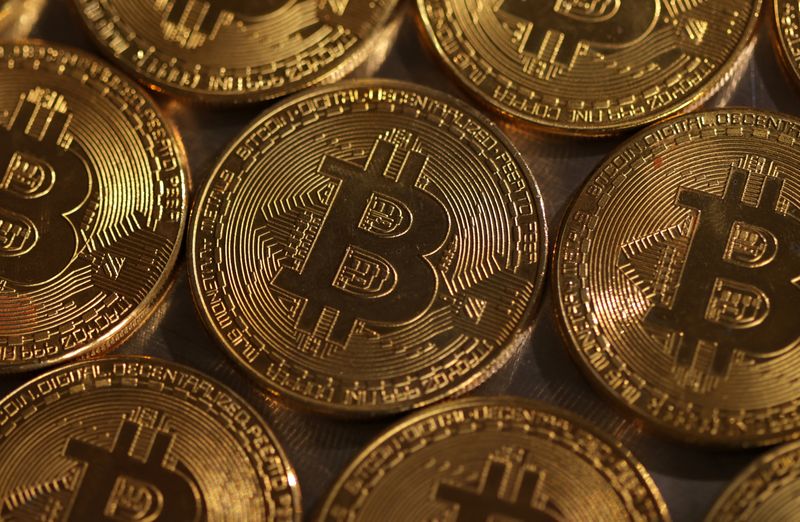By Medha Singh and Lisa Pauline Mattackal
(Reuters) - Bullish bitcoin has been a surprise winner of the banking blowout. Yet investors aiming to amp up their bets face an ominous obstacle: a lack of liquidity that could trigger wild price swings.
The price of the No.1 cryptocurrency has jumped 40% to around $27,700 since March 10, when the failure of Silicon Valley Bank (SVB) careered into mainstream markets.
On the flip side, though, its liquidity is drying up.
Bitcoin's market depth indicates the asset is at its lowest level of liquidity in 10 months, even lower than in the aftermath of the FTX collapse in November, according to data provider Kaiko. The market depth for the two leading trading pairs - bitcoin-dollar and bitcoin-tether - stands at 5,600 bitcoin, the equivalent of about $155 million, Kaiko said.
"As a market maker we try to provide liquidity where we can but we're facing a difficult situation," said Kevin de Patoul, CEO of Keyrock. "There is a big network effect here. In the short term at least, liquidity will remain a challenge."
Slippage, a liquidity measure describing how much prices change between the placement and execution of a trade, has also increased. Slippage for buying bitcoin with U.S. dollars on the Coinbase (NASDAQ:COIN) exchange is 2.5 times higher than it was at the start of March, said Conor Ryder, research analyst at Kaiko.
The slippage for a simulated $100,000 sell order has doubled in the past month, meaning the average price you get for each bitcoin is worse than a month ago, Kaiko said.
The network effect de Patoul referred to was the collapses of Silvergate Capital and Signature Bank, whose networks had long been used by market makers - which expand liquidity by rapidly buying and selling tokens - to transact with exchanges.
Lower liquidity typically translates to more volatile markets, especially in crypto. Kaiko's Ryder said this was possibly one factor behind bitcoin's leap this month.
CryptoCompare's Bitcoin Volatility Index spiked to 96 last week, way higher than the range of 52 to 65 it saw last month as the cryptocurrency held its footing despite broader market turmoil. The index is currently hovering around 68.
THE ALAMEDA FACTOR
Further crimping liquidity, Binance - the world's most liquid crypto exchange - ended zero-fee trading for nearly all its bitcoin trading pairs last week, hitting market makers' ability to charge higher fees for executing trades on the platform.
Liquidity for the bitcoin-tether pair on Binance has dropped 70% since the announcement, while trading volumes have fallen 90%, according to Kaiko data.
The vanishing liquidity can be traced back to the collapse of Sam Bankman-Fried's FTX exchange and hedge fund Alameda Research. Alameda was one of the biggest liquidity providers in the crypto industry, and its bankruptcy left a void that has been exacerbated by the banking sector turmoil of 2023.
While most market participants expect new contenders to gradually emerge to perform the network functions of Silvergate and Signature, they say complete replacements are unlikely to pop up overnight.
Until then, "liquidity is probably going to get worse and worse", said Joseph Edwards, investment adviser at Enigma Securities.

Furthermore, it's not just market-maker trouble that's crunching crypto liquidity; Despite bitcoin's recent rally following a lengthy downturn, many investors are still trading cautiously in the wake of the banking crises and rising interest rates, some specialists say.
"Even if some players haven't left the place, they are on the sidelines right now because of what's happening with banking turmoil," Edwards said.